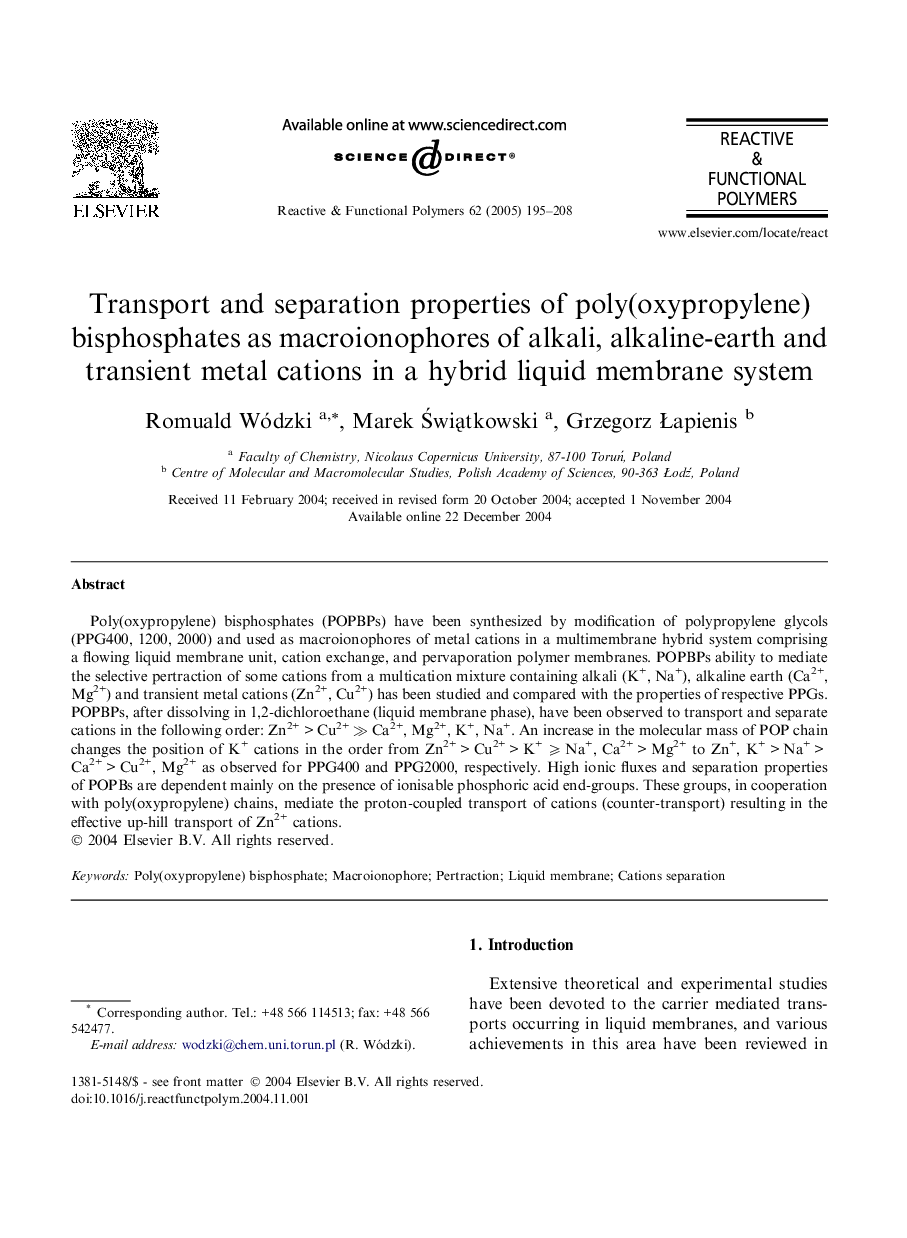| Article ID | Journal | Published Year | Pages | File Type |
|---|---|---|---|---|
| 9562593 | Reactive and Functional Polymers | 2005 | 14 Pages |
Abstract
Poly(oxypropylene) bisphosphates (POPBPs) have been synthesized by modification of polypropylene glycols (PPG400, 1200, 2000) and used as macroionophores of metal cations in a multimembrane hybrid system comprising a flowing liquid membrane unit, cation exchange, and pervaporation polymer membranes. POPBPs ability to mediate the selective pertraction of some cations from a multication mixture containing alkali (K+, Na+), alkaline earth (Ca2+, Mg2+) and transient metal cations (Zn2+, Cu2+) has been studied and compared with the properties of respective PPGs. POPBPs, after dissolving in 1,2-dichloroethane (liquid membrane phase), have been observed to transport and separate cations in the following order: Zn2+ > Cu2+ â«Â Ca2+, Mg2+, K+, Na+. An increase in the molecular mass of POP chain changes the position of K+ cations in the order from Zn2+ > Cu2+ > K+ ⩾ Na+, Ca2+ > Mg2+ to Zn+, K+ > Na+ > Ca2+ > Cu2+, Mg2+ as observed for PPG400 and PPG2000, respectively. High ionic fluxes and separation properties of POPBs are dependent mainly on the presence of ionisable phosphoric acid end-groups. These groups, in cooperation with poly(oxypropylene) chains, mediate the proton-coupled transport of cations (counter-transport) resulting in the effective up-hill transport of Zn2+ cations.
Keywords
Related Topics
Physical Sciences and Engineering
Chemistry
Organic Chemistry
Authors
Romuald Wódzki, Marek ÅwiÄ
tkowski, Grzegorz Åapienis,
